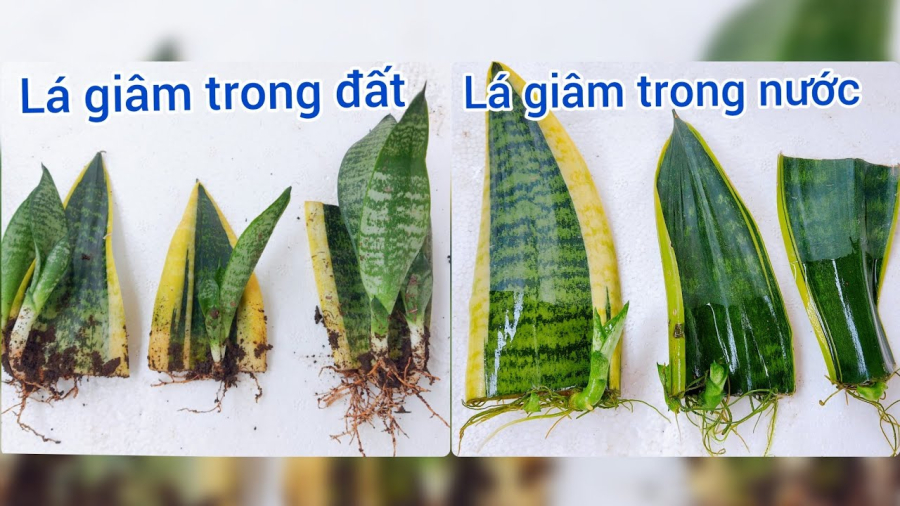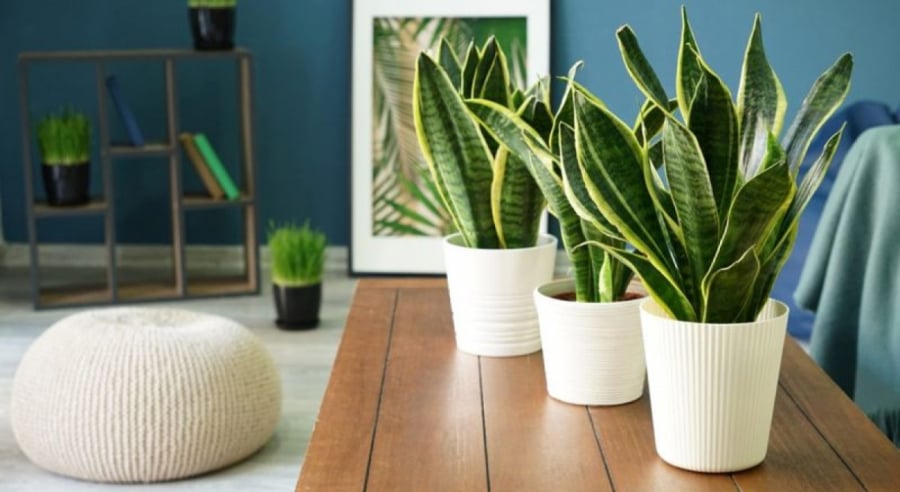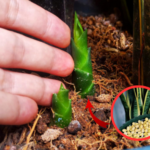The Tiger’s Tongue plant is also known as the “green lung” because it has the ability to filter air and dust, so it is very popular for indoor planting. The propagation of this plant is also incredibly easy, as you can create many “green lungs” for your family’s space from just one plant.
Simple Ways to Propagate the Tiger’s Tongue Plant from Leaves
The Tiger’s Tongue plant is a quite special species, as it has high aesthetic value for decorating living spaces and is also a feng shui plant symbolizing wealth and good luck for the homeowner.
In addition, the Tiger’s Tongue plant can be used to treat common illnesses such as cough, sore throat, etc. It is an easy-to-grow, easy-to-care-for, and easy-to-propagate plant. There are various ways to propagate this plant, but the method to propagate the Tiger’s Tongue plant is quite simple. With this method, you don’t need to spend extra money to buy many new plant pots. Instead, you can still propagate more plants at home.

+ Water Propagation
Firstly, choose a healthy and fresh leaf from the Tiger’s Tongue plant in the pot and use scissors to cut it close to the stem. Then, cut the leaf into several segments with a length of about 5-7cm and remember to cut a reverse V shape at the bottom of the cut segments. After cutting, let the segments dry for about 2-3 days to dry and harden the cut areas. The next step is to place the segments in vases or containers filled with clean water, completely submerging the reverse V-shaped bottom part. Put them in a place with sunlight and regularly change the water every few days. After a period of 3-5 weeks, you will see roots growing at the stem node (the reverse V-shaped part), and when the roots are about 3cm long, it is time to plant the propagations in a new pot. Alternatively, you can place them in a new water pot instead of a soil pot, the new Tiger’s Tongue plant can still grow well.
+ Soil Propagation
The method of propagating the Tiger’s Tongue plant from leaves in soil is similar to water propagation as described above. You still choose a healthy, fresh Tiger’s Tongue plant leaf and cut it off from the pot. Next, cut the mother leaf into several short segments and plant them in soil pots. At this step, you must remember to water moderately, not watering too much and keeping the soil moist. This method is similar to water propagation. After 3-5 weeks, you will observe the emergence of new roots. Take these leaf propagations and plant them in new pots.
+ Propagation by Leaf Division
This method is often used for older Tiger’s Tongue plants that have been grown for a long time, as at this point, the plant’s roots will form a cluster. Use scissors or a knife to cut and separate the root cluster into separate root branches, so that each root branch has a leaf and a young plant attached. Take these young root branches and plant them in new plant pots. This method is the most time-saving, but it can only be done when the mother plant is old and has been grown for a long time. At this time, it is necessary to separate the young leaves into new pots for easier care and faster growth.
How to Take Care of the Tiger’s Tongue Plant

Taking care of the Tiger’s Tongue plant requires attention to factors such as temperature, light, watering, fertilizing, and pot changing.
– Temperature: The Tiger’s Tongue plant is quite sensitive to cold temperatures, so it should be placed in a mild climate with temperatures not lower than 13 degrees Celsius.
– Light: Place the Tiger’s Tongue plant in a location with plenty of sunlight. In case of placing it in the shade, bring it out for sunlight every 10 days.
– Watering: The Tiger’s Tongue plant can tolerate drought, but the soil should not be too dry. When watering, water the bottom of the pot first and gradually move up. If it’s rainy and cold, watering once every 1-2 months is sufficient.
– Pot Changing: In spring, proceed with changing pots or separating plants when the roots have filled the entire pot.
– Fertilizing: From spring to summer, fertilize with potassium-rich fertilizer once a month. Avoid fertilizing during the cold season, as the plant’s absorption ability is reduced during this time.



































